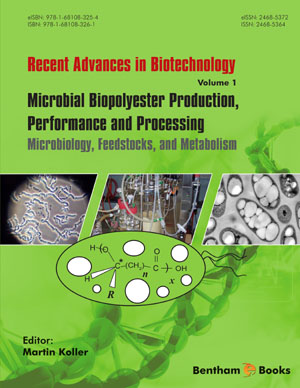Abstract
Polyhydroxyalkanoates (PHA) production by mixed microbial cultures (MMC) became the central point of many research works. Firstly discovered in wastewater treatment systems, namely those related with biological phosphorus removal, it became a process to be considered for polymer production intended to replace petrochemical derived plastics. The ability to store PHA provides microbial communities a competitive advantage for survival under transient conditions typical of waste treatment systems. In this way, MMC can continuously adapt to the operational conditions increasing the number PHA-storing organisms with minimum requirements of sterility. MMC can produce PHA using waste or industrial by-products as substrates, allowing for their valorization. The use of waste, together with the lower requirements in sterility and process control, could signify a decrease on PHA production costs. The price is one of the main drawbacks that prevent the increase of world PHA market share. This chapter intends to contextualize the use of MMC for PHA production, by describing the different approaches and compare them with the traditional processes employing pure or genetically modified organisms. The main processes to select PHAstoring MMC are discussed, namely alternating of anaerobic and aerobic (AN/AE) or anoxic (AN/AO) conditions and aerobic dynamic feeding (ADF). The use of wastes as substrates, the operational conditions, the microorganisms involved as well as the molecular methods used for their identification are also the focus of this work.
Keywords: ADF, AN/AE, Mixed microbial cultures, Molecular methods, Operational conditions, Polyhydroxyalkanoates, Selection, Valorization, Waste, Waste treatment.






















